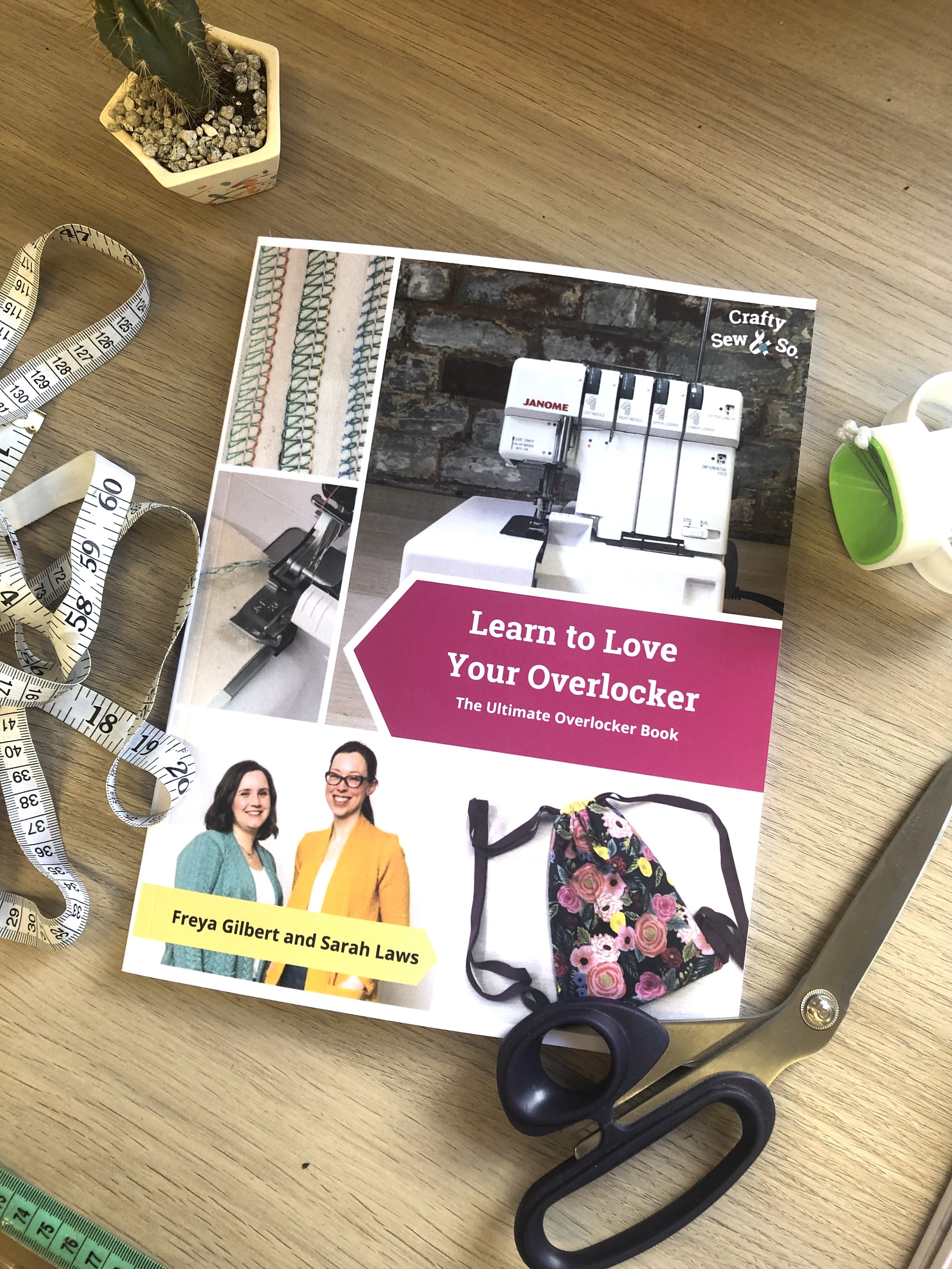How to… Finish your edges with an overlocker
Take a look at the inside of most high street garments and you will see the neat interwoven threads of the overlocking stitch.
The edges of most woven fabrics need to be finished in some way to prevent fraying and extend the life of the garment, and overlocking is a quick and efficient way to do this.
We love using an overlocker to create and finish our garments.
We love it so much we wrote a book about it!
So when and where should I use overlocking?
Overlocking can be used in two ways; to finish the edges of the fabric and to construct the garment.
Usually, in home sewing, we would not use an overlocker to construct woven garments as it reduces the seam allowances leading to weaker seams. It is also very hard to unpick if you need to make alterations. If you are constructing a garment with overlocking and you’re not sure about sizing of your garment, it is a good idea to baste it together, checking the fit and then overlocking, before doing any topstitching or hemming.
For woven garments, we usually use a combination of a straight stitch for construction using a sewing machine, and then the edges are finished with overlocking or another method.
You do not need to finish the edges of any seam which will be covered by another piece of fabric and stitched down, for instance, the neckline which will be covered by a facing or binding or the waistline which will be concealed by the waistband. You can finish the edges of the hem if you wish although we usually recommend double turning the hem on our woven garments so edge finishing is not necessary.
Finishing the edges of woven garments with overlocking
There are a few ways to use an overlocker machine to finish the edges of the seams:
Overlock the edges before constructing anything; just overlock around the vertical seam edges of each panel as a single layer to prevent fraying.
Finish the seams together after constructing your garment but before doing any topstitching. You’ll want to try on the garment and make sure the fit is spot on before finishing the seams in this way. Be very careful to keep the main fabric of the garment out of the way of the knives on the overlocker.
Setting up the overlocker
Start with your tension dials set to the default. On our machines, the Brother 2104D, this is 4. For woven garments check that the differential feed is set to 0 (more on differential feed in next week’s post!)
Test the stitching on a scrap of fabric then, using the guideline on the machine plate, stitch the long straight edges of each panel trying not to cut off any of the fabric, just the frayed threads.
If you don't have an overlocker there are several other methods you can use to finish your edges:
Overcasting
The overcasting stitch, available on many modern machines, gives the same effect as overlocking but without cutting off any edges. The stitch looks a bit like mountains and valleys.
Some machines have a special foot to use with this stitch to keep the fabric really flat – line up the edges of the fabric with the gap in the foot and use the protruding leg to guide the fabric:
Zigzag stitch
If you don’t have an overcasting stitch on your machine, you can use a zigzag stitch. Set your machine to a medium length, wide set zigzag – this will reduce stretching, rolling or puckering. Position your stitching so that the right and side lands just on the edge of the fabric.
In our instructions for each pattern, we will prompt you when to finish your edges. Always press your edges after finishing them to smooth any puckers.
If you want more hands on experience and guidance using a overlocker we run a monthly overlocking for beginners class at the Crafty Sew & So Studio.






